ADOPTED OWLS
AGE DETERMINATION
Three major classes of pigments can be found in birds: melanins, carotenoids, and porphyrins. Porphyrins are the least common of the three, but they are found in many species of owls. Under natural light porphyrins can add a slightly greenish or sometimes rosy hue to owl feathers, but when exposed to ultraviolet light, they fluoresce bright pink. However, because the porphyrins break down as feathers age and wear, the intensity of the fluorescence depends largely on the age of a feather. This means that neighboring feathers will glow with different intensities of pink if they are different ages.
Determining the age of a wild owl is most easily accomplished by deciphering age-specific patterns of molt (feather replacement) among the feathers of the wing. These molt patterns are easily seen as distinct patterns of fluorescence when the wing is viewed under ultraviolet light. Compare the image you received with those below: hatch-year (HY) Saw-whet Owls grew their entire set of flight feathers simultaneously when they were nestlings and young fledglings, resulting in a uniform pink fluorescence across them (i.e., there are no contrasting feather ages). Second-year (SY) Saw-whets will have replaced their outermost and innermost wing feathers – but not the feathers of the mid-wing – resulting in a pattern unique to second-year owls. After their second-year owls begin to replace their feathers more erratically, and these less predictable patterns force us to lump many of these older birds into the umbrella category of “after second-year” (ASY).
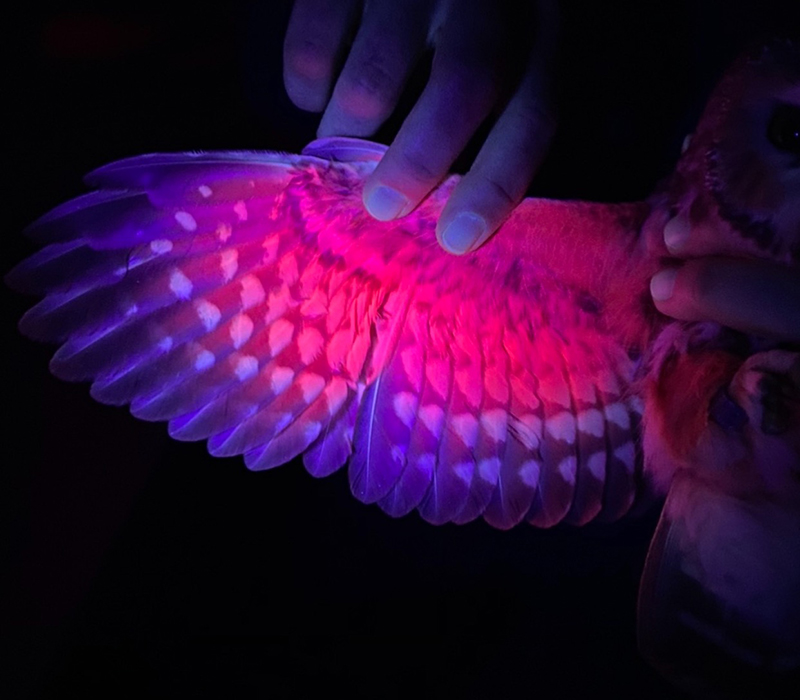
Hatch year
Uniform pink fluorescence across the flight feathers indicates a hatch-year bird.
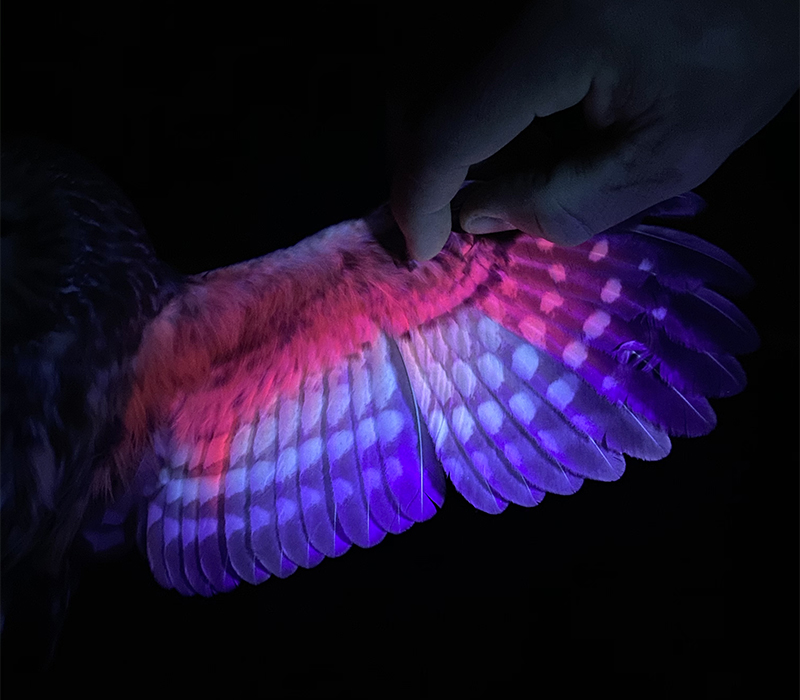
Second year
Outermost primary flight feathers and innermost secondary flight feathers are newly replaced and bright pink, contrasting with year-old faded middle flight feathers.
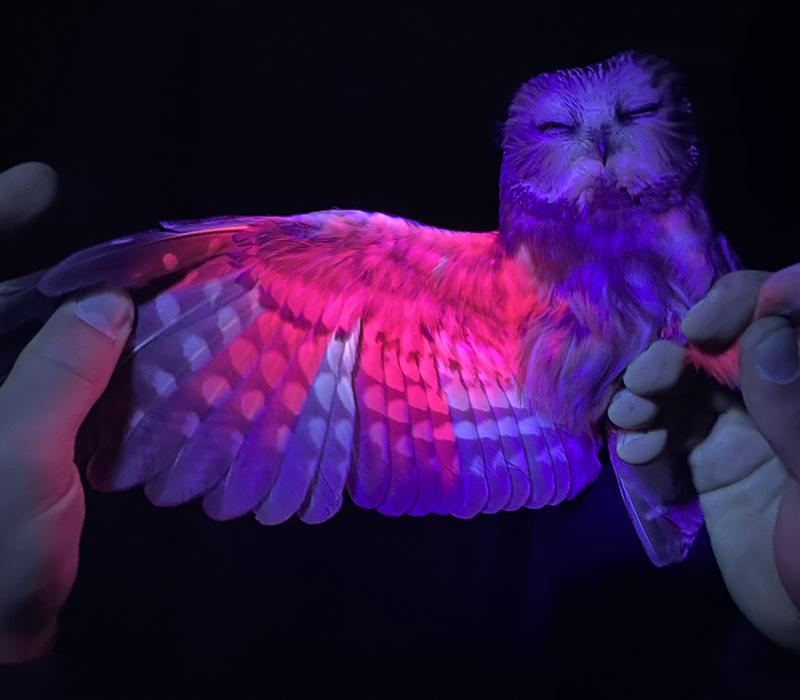
After second year
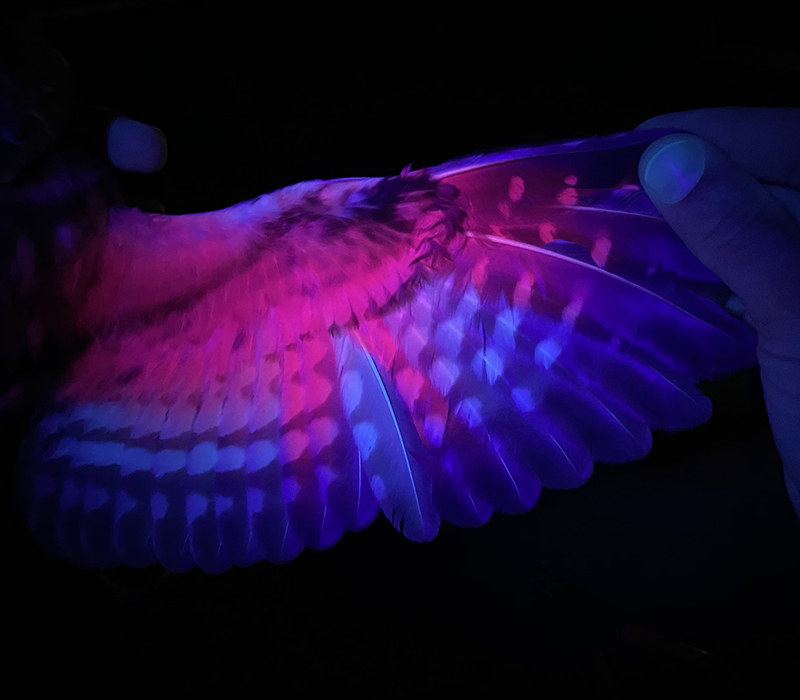
After second year
Erratic flight feather replacement has produced the complex molt patterns of these after second-year birds. Three intensities of pink fluorescence can be seen, corresponding to three different feather generations.
Sex Determination
While identical in appearance, male and female Saw-whet Owls exhibit sexual size dimorphism: females average larger than males in many of the size-related variables that one might think to measure (wing length, tail length, mass, head length, tarsus length, etc.). However, the zone of overlap between males and females tends to be large across any one of these variables. By using a combination of the mass and the wing chord (the distance from the wrist to the longest flight feather using the natural curvature of the wing), owl banders David Brinker et al. (1997) developed a chart that allows us to infer the sex of a majority of owls captured (around 80%). A modified version of this chart can be found below and can be used to determine the sex of your adopted owl. To operate this chart, do the following:
1. First, travel down the “wing chord” column to find the row with your owl’s wing chord.
2. Next, move right within that row and choose the cell for which the statement about your owl’s mass is true.
3. Follow this column upwards and find out the sex.
REFERENCE
DF Brinker, KE Duffy, DM Whalen, BD Watts, and KM Dodge. 1997. Autumn migration of Northern Saw-whet Owls (Aegolius acadicus) in the Middle Atlantic and Northeastern United States: what observations from 1995 suggest. 74–89. in JR Duncan, DH Johnson, and TH Nicholls, eds. Biology and conservation of owls of the northern hemisphere: second international symposium. USDA Forest Service Gen. Tech. Rep. NC-190. St. Paul, MN, U.S.A.

